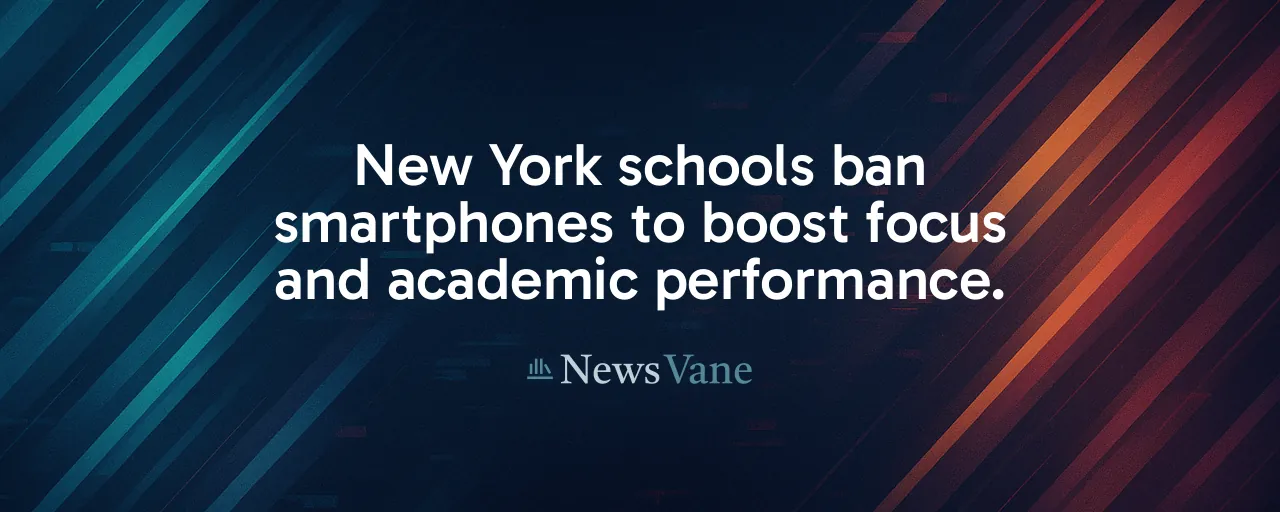A New Chapter for New York Classrooms
New York schools are gearing up for a major shift. Starting in the 2025-26 school year, smartphones and internet-enabled personal devices are off-limits during the entire school day, from the first bell to the last. Governor Kathy Hochul announced a new website on July 2, 2025, offering resources to help districts craft distraction-free policies by the August 1 deadline. This move, backed by state law, aims to create environments for students to focus on learning and connecting face-to-face.
The policy responds to growing concerns about distractions in classrooms. Research shows phones pull attention away from lessons, impacting grades and engagement. The ban also raises questions about safety, equity, and enforcement. Schools need to balance these priorities while ensuring students, parents, and teachers feel heard. The state's approach emphasizes practical solutions, like storage options and clear communication channels, to make the transition smooth.
The initiative extends beyond simply removing phones. It involves rethinking how schools foster attention, mental health, and real-world interactions. By setting a statewide standard, New York aims to level the playing field, ensuring every student benefits from a focused learning environment. Success hinges on how districts adapt and address stakeholder needs.
Why the Ban Matters for Learning
Smartphones disrupt more than a single class period. A London School of Economics study found that banning phones led to a six-point increase in test scores, with low-income students seeing the biggest gains. Similar data from Spain showed improvements equivalent to nearly a year of learning in math and science. These findings suggest that removing distractions unlocks significant academic potential, especially for those who need it most.
Beyond grades, phones impact social dynamics. Norwegian research noted less bullying and fewer mental health clinic visits for girls after phone bans. Teachers also report reclaiming valuable instructional time when students aren't sneaking glances at screens. In New York, educators hope these benefits translate to stronger classroom engagement and healthier peer interactions.
Bans alone aren't a cure-all. An English study funded by the NIHR found that while school restrictions improve focus, they don't significantly cut overall daily screen time. This points to a broader challenge: schools need to pair bans with activities like sports, arts, or clubs to keep students engaged in meaningful ways.
Balancing Safety and Access
Parents often worry about staying connected with their children during the school day. New York's policy addresses this by requiring schools to provide reliable contact channels, such as office phones or staff-monitored systems. Simple cellphones without internet access are allowed, and exemptions cover students who need devices for medical conditions, disabilities, or translation purposes.
Equity is another priority. The state allocated $13.5 million to help schools purchase storage solutions, like lockable pouches or lockers, ensuring underfunded districts aren't left struggling. Schools also consult teachers, parents, and students when crafting policies to avoid unfair discipline, particularly for marginalized groups. These steps aim to create trust and prevent unintended consequences.
Challenges remain. High schoolers, used to constant connectivity, often feel anxious without their phones. Immigrant families relying on translation apps or undocumented parents needing direct contact face hurdles if exemptions aren't clear. Schools need robust plans to address these concerns while maintaining the ban's intent.
Lessons From the Past
New York isn't starting from scratch. In the early 1990s, schools targeted pagers and early cellphones over safety and drug concerns. New York City's 2005-2015 cellphone ban, enforced under mayoral control, reduced distractions but sparked parent backlash over emergency access. Its repeal in 2015 left teachers frustrated, as classroom disruptions spiked. These experiences shaped the current policy's focus on stakeholder input and flexibility.
Nationwide, the trend is clear. By 2025, over half of U.S. states have regulated student phone use, with Florida's 2023 ban serving as a model. Twenty-six states now enforce similar restrictions, citing improved academics and mental health. New York's law, the largest of its kind, builds on this momentum while adding funding and local discretion to ease implementation.
Making It Work on the Ground
Implementation is where the policy succeeds or stumbles. Districts choose their storage methods, from pouches to centralized lockers, giving administrators flexibility to match their needs. Staff training, clear signage, and consistent routines are critical to avoid confusion. For open-campus schools, monitoring off-campus phone use during lunch periods poses an additional hurdle.
Engagement is just as important. Schools that offer robust extracurriculars, like music programs or debate clubs, see better outcomes after bans, as students find productive outlets. Digital literacy programs, teaching responsible phone use outside school hours, also bridge the gap. These efforts require investment and commitment from districts to go beyond simply locking up devices.
A Path for Progress
New York's smartphone ban is a bold step toward distraction-free schools, grounded in evidence that phones hinder learning and social growth. By providing resources, funding, and flexibility, the state aims to empower districts to tailor solutions that work for their communities. Success depends on clear communication, equitable enforcement, and opportunities for students to thrive without screens.
Challenges like parental concerns and enforcement logistics are real but not insurmountable. Schools draw on research and past experiences to refine their approach, ensuring policies support every student. The focus remains on creating environments where young people learn, connect, and grow without the constant pull of a screen.
As the 2025-26 school year approaches, New York's experiment is poised to set a standard for others. If districts balance focus with fairness, the ban delivers on its promise of classrooms where students are present, engaged, and ready to learn.
